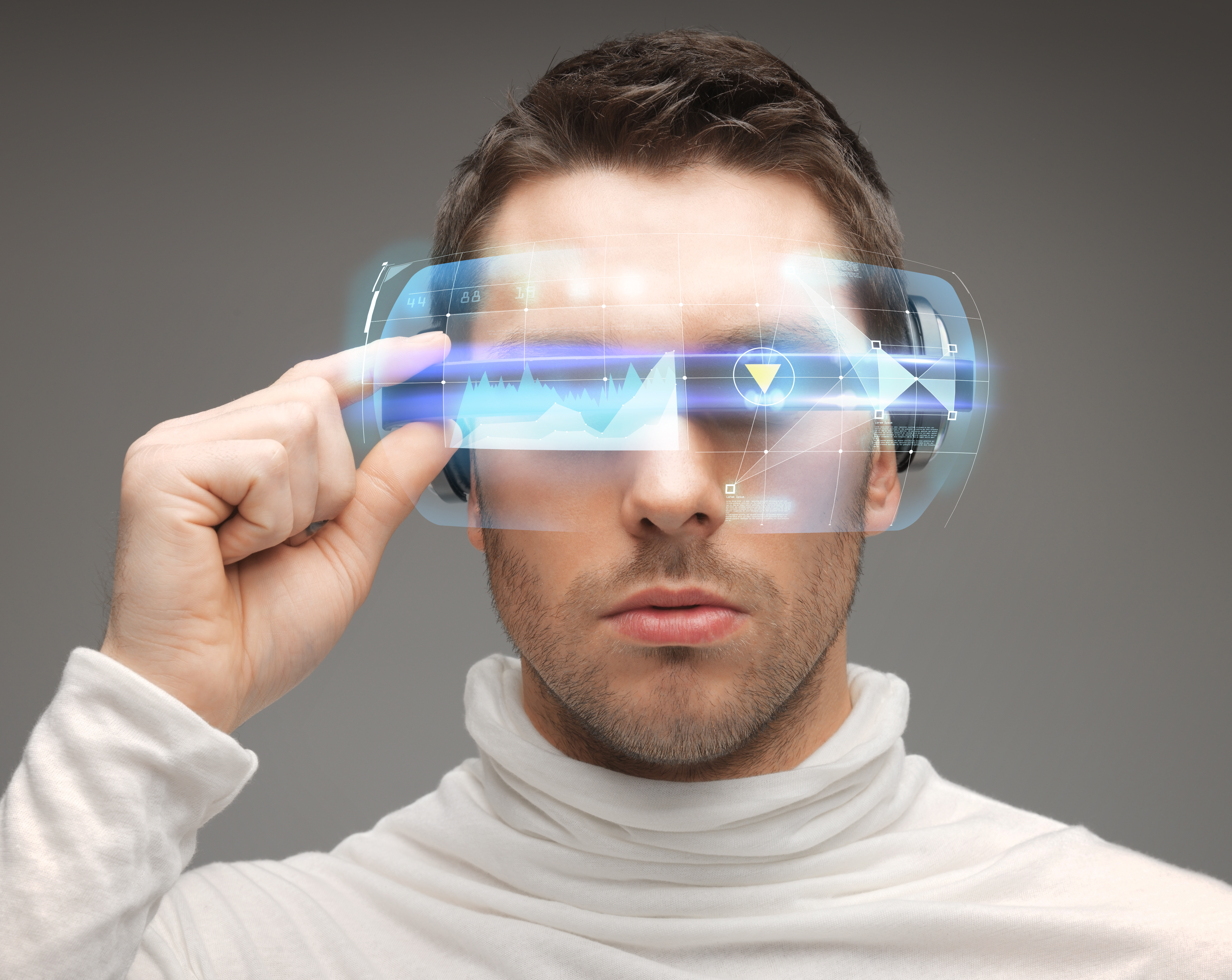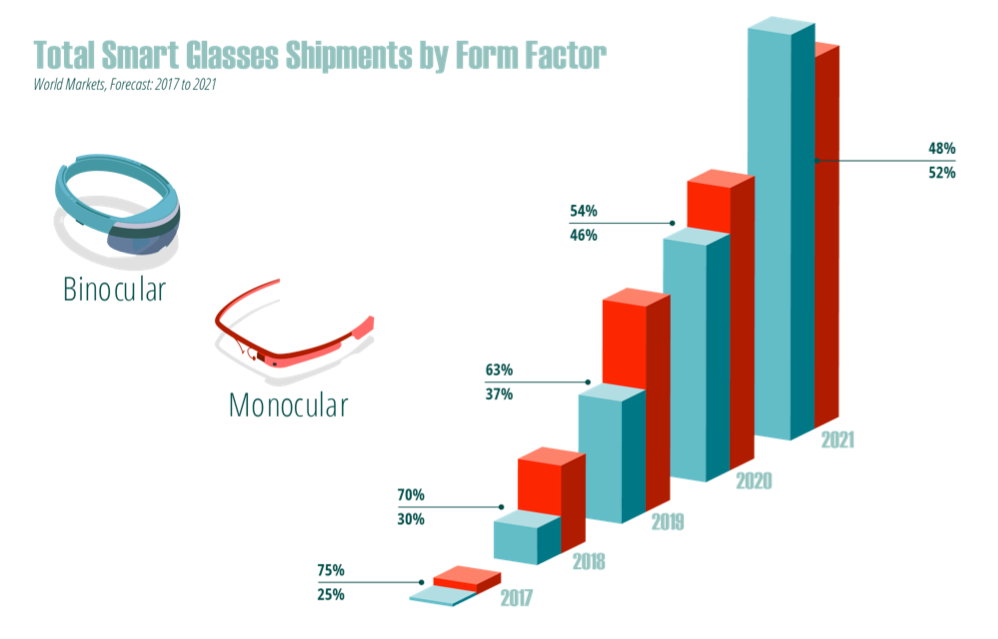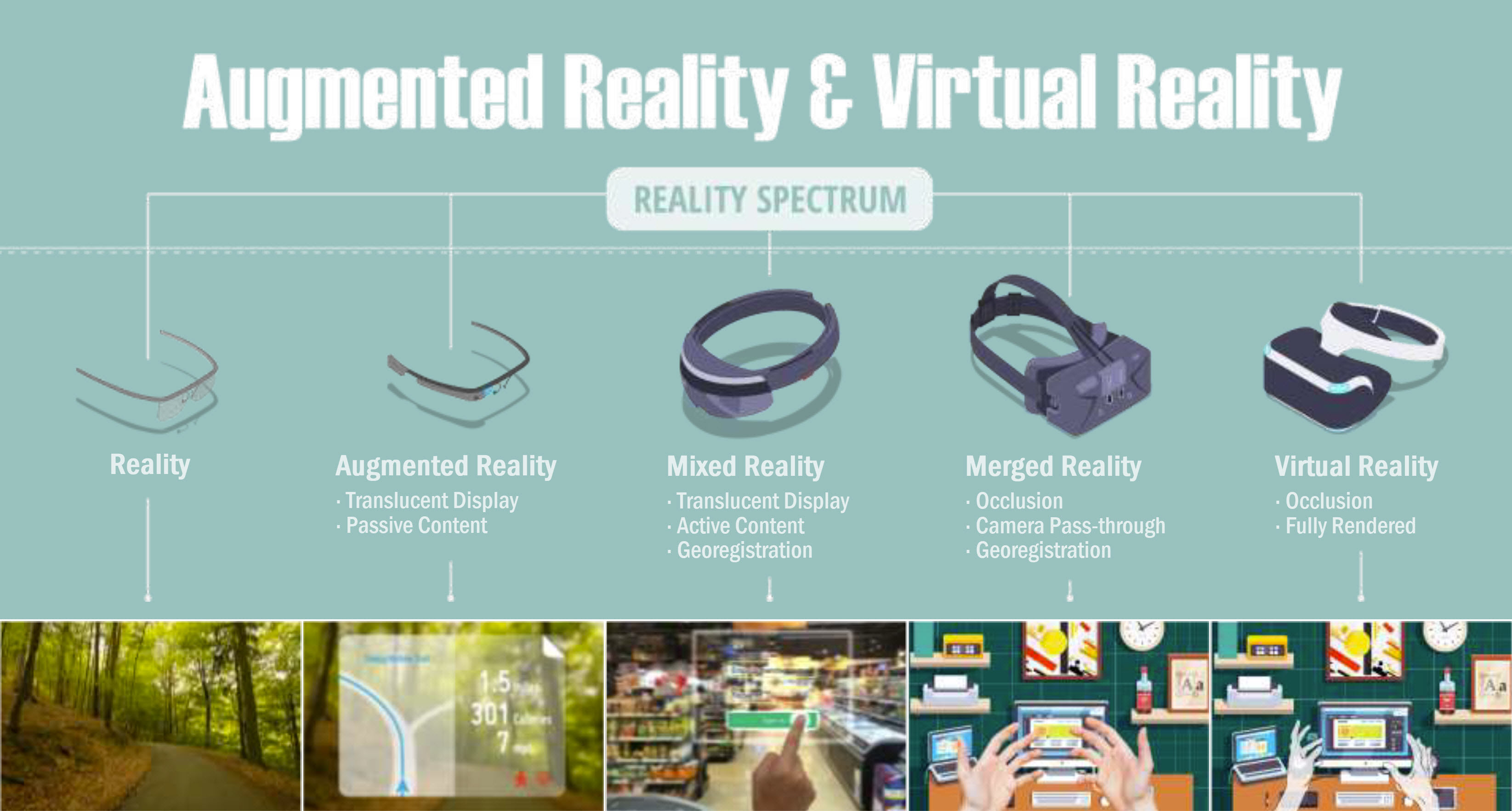
Smart Glasses are the start of the next wave of life’s transformational devices with expectations of having a bigger impact than smart phones. Wearable computer glasses add needed and contextual information to what the wearer sees.
For businesses, they provide a solution for people to access applications while keeping their hands free to work. A feature that is providing significant benefit in the areas of field service work involving equipment installation and maintenance, manufacturing and complex assembly, logistics and warehousing, building and construction, and medical.
A little history
Many people may remember the Google Glasses that Google released onto the public back in 2014. Many people used them in ways that were, well, not entirely appropriate creating a great deal of criticism and even legislative action due to privacy and safety concerns. Ultimately, Google stopped producing them less than a year later.
These devices were a great idea. Google just missed the mark for the right use cases. Many businesses saw the potential of Google glass in the workplace and started putting together projects for them only to be thwarted when Google stopped production. This spawned new device manufactures and new innovations. Within a few years there are now many options including Glass from X Company, a semi-secret research-and-development facility founded and operated by Google. It is now clear that Google didn’t end its glass initiatives, rather it simply changed its direction from consumer to industrial.
Smart Glasses Today
There are a multitude of Smart Glasses providers now. Some you may want to look at are X Glass, Epson, Vuzix, Sony, Microsoft Hololens, and ODG. According to Bloomberg, Apple is also building a new augmented reality headset that it plans on having ready within the next 2 years.
The glasses come in monocular and binocular form factors. Monocular glasses are typically smaller and can feel less obtrusive. Binocular glasses provide stereoscopic depth creating a higher fidelity and more immersive experience. Economically, monocular glasses are a lower cost which is the driving reason for their majority share. However, technologies are improving, costs are coming down, and devices are getting more stylistic as well as use case specific. ABI Research believes the market will grow significantly and that binocular will overtake monocular in the next few years.
 Image Credit: ABI Research
Image Credit: ABI Research
The Reality Spectrum
The devices themselves are great, but the value comes down to what they are used for. And, that comes down to simply how we get, react to, and update information to get our job done. Our eyes only see so much and focus on even less, our mind must understand what it is seeing, and our memory and knowledge extends only so far. In contrast, a camera can see everything all at once, computer systems and artificial intelligence can process and understand it near instantaneously, and contextually relevant information can be quickly found and retrieved. The key is how can we make use of all that. The answer, by altering our own reality. Enter Augmented, Mixed, and Virtual Reality and fitting the business need with the right solution.
 Image Credit: ABI Research
Image Credit: ABI Research
Smart glasses provide these realities to workers that need to have their hands free to perform their jobs most effectively.
Smart Glasses for Businesses
Virtual Reality headsets provide an incredibly immersive experience in the gaming space. Augmented and virtual reality games are capturing the consumer market’s attention on their mobile devices for both fun and purpose. But, it’s the business and industrial uses that these technologies promise to shine brightest: boosting efficiency and productivity, eliminating previously unavoidable risks, and literally giving employers and managers new ways to look at information, accomplish tasks, measure performance, and achieve operational results.
Remote Video Collaboration. The most prominent application for smart glasses in business today is remote video collaboration. The ability to work together with experts remotely in a see-what-I-see system is improving many sectors across the board. Ranging from regular field service check-ups to complex engineering support, telemedicine and intricate procedures, this remote assistance possibility is making more and more companies incorporate this eyewear technology solution.
Real-Time Guidance. A combination of AR glasses and audio essentially creates a user-specific, contextually relevant guidance system that confirms that wearers are in the right place, looking at the right thing, and taking the right action. This technology could benefit almost any employee who is not working at a desk: walking field service reps through repair procedures or manufacturing techs through complex assemblies, stepping store merchandisers through display setups, guiding warehouse workers through their picking and kitting, or providing home health aides with up-to-date instructions, compliance, and health data supporting arrival at each patient’s home, task completion, and departure.
Immersive Training. Virtual Reality headsets replicate real-life equipment and environments in an immersive training experience reducing costs and time for workers to gain new and complex skills. Augmented reality glasses enable workers to learn in hands-on training environment as well as real-time out in the field.
Operator and Repair Manual Reference Working on equipment and holding a reference manual can be quite awkward and switching focus from what your working on over to the printed manual is inefficient and distracting. Smart glasses display and overlay the instructions to eliminate the need for a physical book. Not only will this help speed up the time it takes to make a repair, but it will also reduce user error.
Seeing Everything. The camera see’s everything all at once and things that the human eye can’t. It can alert workers to dangers such as high voltage, fans and other moving parts, high pressure pipes, other vehicles, etc. Combined with facial recognition software, they can help police officers identify suspects or missing persons in real-time. Specialty cameras can be used to pick up thermal gradients, chemical signatures, radioactivity, or other things that are invisible to the naked eye.
Visualized Operations and Environments. Operations workers can use glasses to get real-time operational feedback while they scan the manufacturing floor, assembly lines, warehouse flow, or construction site with relevant information such as costs, supply inventories, planned versus actual spending, employee and equipment scheduling, equipment operational and maintenance details, and more.
Field service workers can get information about job sites, customer details, and real-time equipment sensor data.
Real-Time Translation. AR glasses can be used to translate written language and provide additional details for signs, labels and documents.
Virtual Meetings. Soon VR and AR will be able to create true telepresence where attendees can transmit high fidelity avatars or AR holograms of themselves complete with facial expressions and gestures in to someone else’s office or group rooms.
Beyond glasses
Glasses may just be the stop gap. Eventually new technologies may use contacts or implants. The science fiction may not be all that far off.
And, keep in mind sight is only one of the senses. Many of these devices also include audio and haptic (touch) communication as well. Then there are the countless other wearables. Gloves or shoes that can sense danger and provide haptic responses to alert the wearer or clothing that can track bodily function such as heart rate and oxygen levels. The innovation is endless to augment all five of our senses.
Getting started
Even though widespread usage still remains on hold for the general public, smart glasses have found valuable areas to operate, develop and grow. So valuable that it is not surprising tech giants such as Apple, Facebook and Samsung are working on AR powered smart glasses of their own.
The current use of smart glasses is convincing more and more forward-thinking businesses to hop on board. As with most new technologies, knowing if and where these solutions can help your business can be a challenge. Check out our augmented, mixed, and virtual reality solutions and contact us. We are always ready to help.